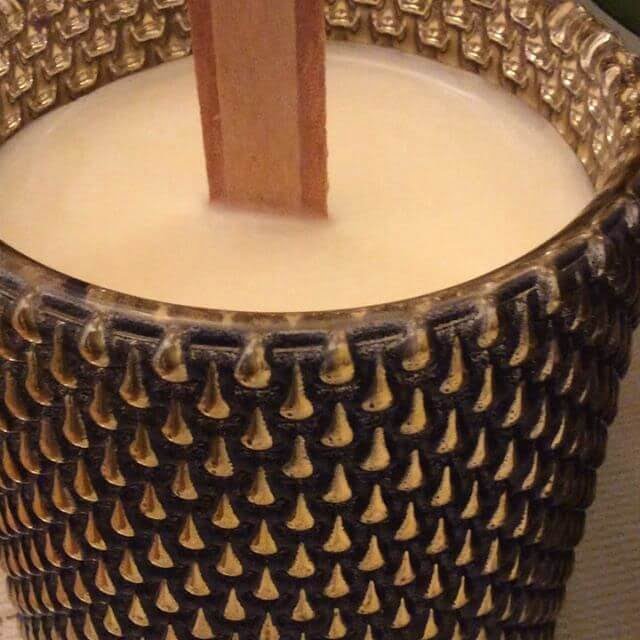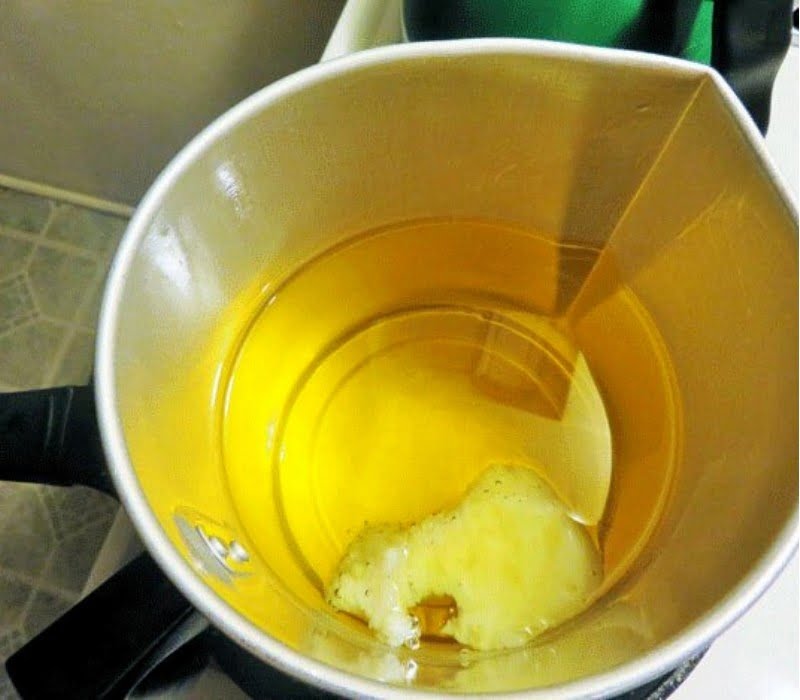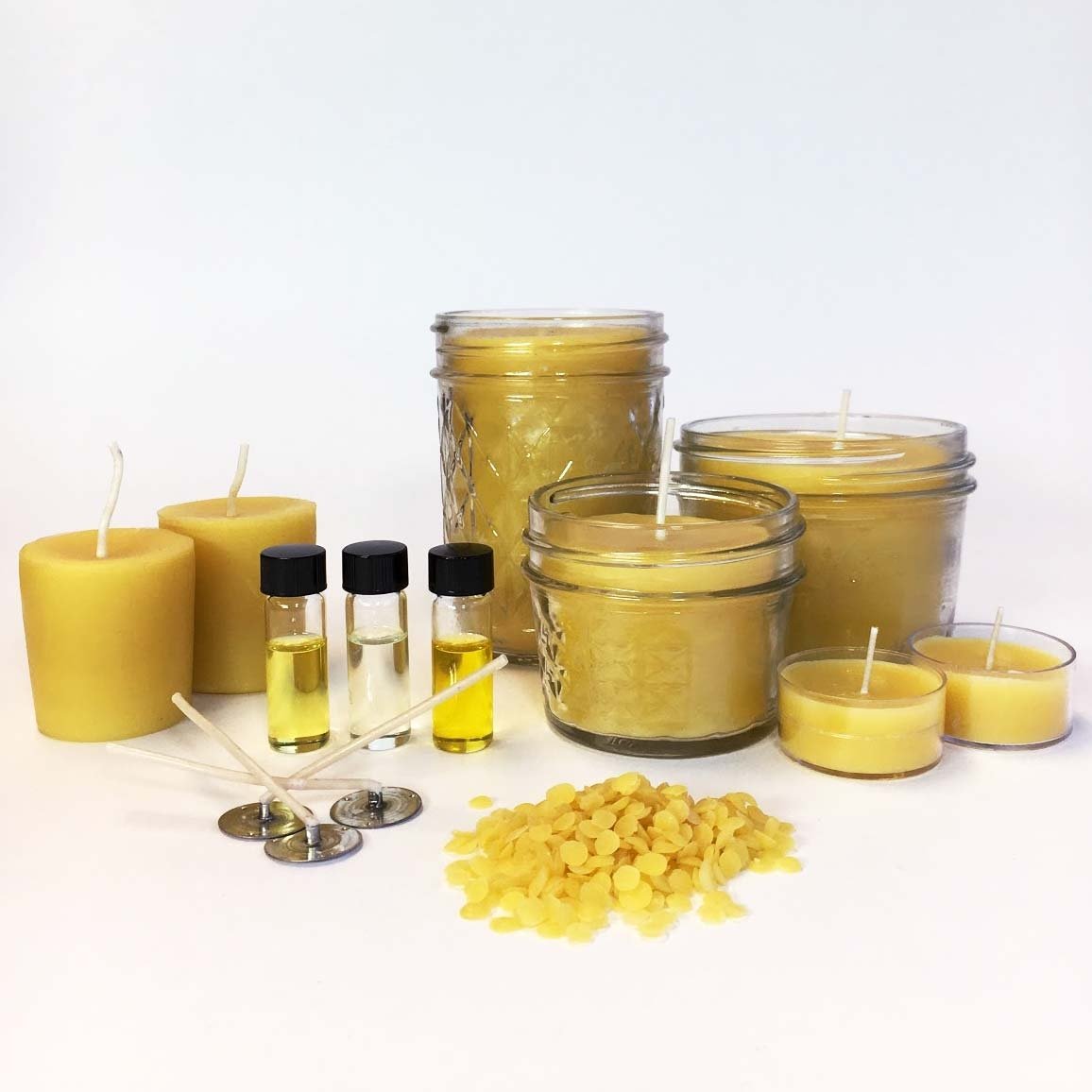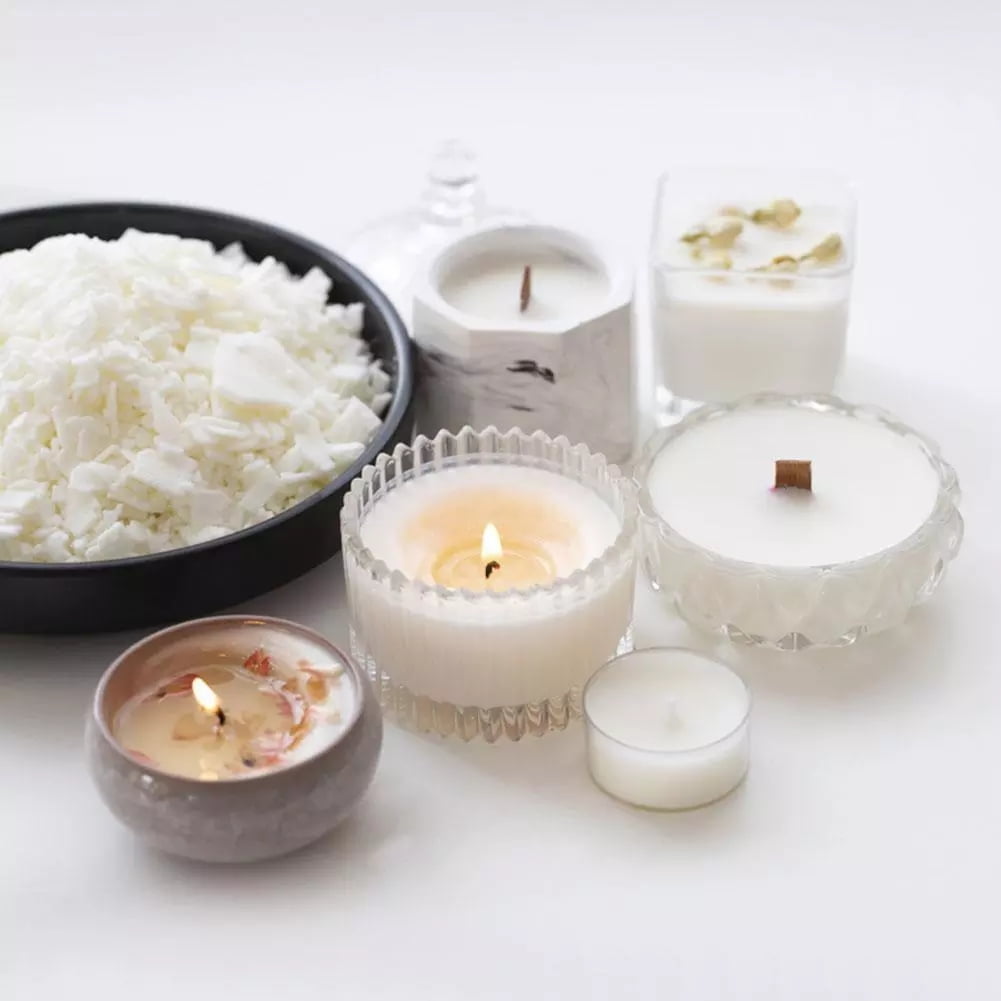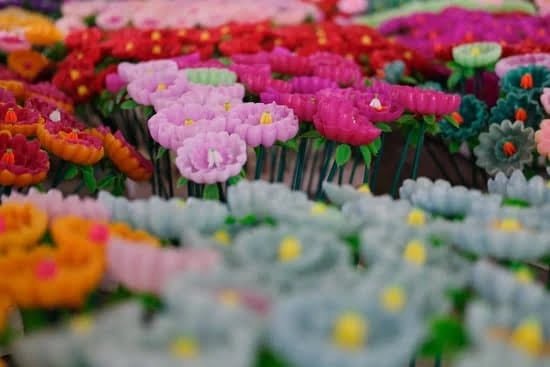In the world of candle making, incorporating essential oils has become a popular and exciting trend. These oils not only enhance the fragrance of candles but also offer therapeutic benefits through aromatherapy. As the demand for scented candles rises, more candle enthusiasts are seeking to create unique and personalized experiences in their craft.
Aromatherapy, which utilizes essential oils for psychological and physical well-being, has made a significant impact on the candle industry. The power of scent is widely recognized as being closely linked to our emotions and memories. By using specific essential oils in candle making, one can create an atmosphere that not only delights the senses but also promotes relaxation, upliftment, or even increased focus.
To embark on this aromatic journey successfully, it is crucial to have a solid understanding of essential oils. These highly concentrated plant extracts play a key role in determining the scent profile of a candle. It is important to know how they are produced and extracted, as well as how to source high-quality oils that will achieve desired results.
Aspiring candle makers must consider several factors when choosing essential oils – fragrance strength, compatibility with different waxes, and safety considerations. Each oil has its own unique characteristics that can affect burn time and scent throw. Being knowledgeable about these factors not only ensures successful candle making but also helps in selecting the best essential oil for each project.
In this comprehensive guide, we will delve into various aspects of aromatherapy in candle making. From understanding essential oils and their extraction methods to analyzing popular options available for crafting exquisite scents, we will cover it all. With this information at your fingertips, you will be able to make informed choices and unleash your creativity in creating personalized candles that ignite both your senses and those around you.
Understanding Essential Oils
Essential oils are the cornerstone of aromatherapy, and their use in candle making adds a whole new dimension to the sensory experience. Understanding what essential oils are and how they are produced is crucial in selecting the best ones for your candle-making projects.
Essential oils are highly concentrated plant extracts obtained through various extraction methods, such as steam distillation or cold-pressing. These oils capture the essence and aroma of the plants from which they are derived. It’s important to note that essential oils are not created equal – their quality depends on factors such as plant source, growing conditions, extraction technique, and storage.
To ensure you’re using top-notch essential oils in your candles, sourcing plays a vital role. Look for reputable suppliers or brands that provide transparency about their sourcing practices. Ideally, choose oils that are pure with no additives or synthetic ingredients. Opting for organic or wildcrafted essential oils can further enhance their quality and therapeutic benefits.
When it comes to choosing essential oils for candle making, fragrance strength, compatibility with waxes, and safety considerations should all be taken into account. Some essential oils have stronger aromas than others, so consider the desired intensity of fragrance you want in your candles. Additionally, certain essential oils may not blend well with specific types of wax due to variations in chemical composition.
To guide your selection process effectively, it’s helpful to understand how different essential oils impact burn time and scent throw in candles. Some oils may influence burn time positively by providing a longer-lasting scent throughout the entire candle’s lifespan. On the other hand, some highly volatile oils may evaporate quicker during burning, resulting in a shorter scent throw.
- Choose high-quality essential oils sourced from reputable suppliers
- Consider fragrance strength based on personal preference and desired intensity
- Ensure compatibility with chosen wax type for optimal blending
- Understand the impact of different essential oils on burn time and scent throw
By considering these factors, you can make informed decisions about which essential oils are best suited for your candle-making endeavors. In the next section, we will explore some of the most popular and widely used essential oils for candle making, their aroma profiles, and potential therapeutic benefits.
Factors to Consider When Choosing Essential Oils for Candle Making
When it comes to choosing essential oils for candle making, there are several important factors to consider. These factors will not only determine the overall quality and effectiveness of your scented candles but also ensure the safety and satisfaction of your customers. Here are some key factors to keep in mind when selecting essential oils for your candle-making projects.
Firstly, fragrance strength is a crucial consideration. Different essential oils have different levels of fragrance intensity. Some oils, like lavender or citrus oils, have stronger scents that can easily fill a room with their aroma.
Others, like light floral or herbal oils, may have a more subtle fragrance that may require a larger quantity to achieve the desired scent throw in your candles. It’s important to test different oil quantities and combinations to find the right balance and strength of fragrance for your specific candle-making project.
Secondly, compatibility with waxes is an essential factor in choosing essential oils for candle making. Different types of waxes have varying melting points and characteristics that can affect the performance and scent throw of your candles.
For example, soy wax tends to be more compatible with certain essential oils than paraffin wax or beeswax. It’s important to research and understand which essential oils work best with the type of wax you are using to ensure optimal scent diffusion and burn quality.
Lastly, safety considerations should be a top priority when selecting essential oils for candle making. Some essential oils can be highly flammable or irritate the skin if used incorrectly. It’s crucial to follow proper guidelines for dilution rates and usage recommendations provided by reputable sources or suppliers. Additionally, keep in mind any potential allergies or sensitivities that your customers may have when using certain types of essential oils.
Considering these factors will help you make informed decisions when choosing essential oils for your candle-making projects. By finding the right combination of fragrance strength, compatibility with your chosen wax, and ensuring safety precautions are adhered to, you can create high-quality and delightful scented candles that will be cherished by your customers.
Popular Essential Oils for Candle Making
When it comes to choosing essential oils for candle making, there are a variety of options available that can bring delightful aromas to your creations. Here are some of the most popular and widely used essential oils in candle making:
- Lavender: Known for its calming and soothing properties, lavender essential oil is a favorite among candle makers. Its floral and herbaceous scent creates a relaxing ambiance and is perfect for promoting relaxation and better sleep.
- Eucalyptus: With its refreshing and invigorating aroma, eucalyptus essential oil is often used to create energizing candles. It has a crisp, camphor-like scent that can clear the airways and promote focus and concentration.
- Citrus: Essential oils such as lemon, orange, and grapefruit bring a burst of citrusy freshness to candles. These oils have uplifting properties that can uplift mood and create a positive atmosphere in any space.
- Peppermint: If you’re looking for a cooling and minty fragrance, peppermint essential oil is an excellent choice. It adds a refreshing touch to candles and can help stimulate the senses.
- Vanilla: The warm and comforting aroma of vanilla essential oil adds a sweet note to candles. Its rich scent is known to evoke feelings of relaxation, comfort, and coziness.
- Rosemary: For those who enjoy herbal scents, rosemary essential oil is a popular option. Its woody aroma has energizing properties that can boost mental clarity and promote focus.
Remember that these are just some examples of popular essential oils for candle making, but the possibilities are endless. Experimenting with different combinations or using single oils can help you find your signature blend or scent.
Whether you want to create a relaxing ambiance or invigorate your senses, incorporating these popular essential oils into your candle making can bring delightful aromas that ignite the senses.
The Best Essential Oil for Candle Making – A Comprehensive Evaluation
When it comes to choosing the best essential oil for candle making, a comprehensive evaluation is essential. Several factors should be taken into consideration to ensure that the selected oil provides the desired fragrance intensity, longevity, and compatibility with different types of wax.
One important aspect to consider is the scent longevity of the essential oil. Some oils have a stronger staying power and can maintain their aroma throughout the entire burn time of the candle. Others may fade quickly, resulting in a weaker scent throw. It’s important to choose an essential oil with a fragrance that will last for the duration of the candle’s burn time.
Additionally, the strength of the essential oil’s fragrance should also be considered. Some oils have a more potent scent profile than others, allowing for a stronger fragrance when added to candles. This can be particularly important if you prefer a more intense aroma in your candles.
Compatibility with different types of wax is another crucial factor to evaluate when choosing an essential oil for candle making. Certain oils may work better with specific types of wax due to their chemical composition or melting point. It’s important to research which essential oils are most effective when used with your chosen type of wax to ensure optimal results.
| Essential Oil | Fragrance Intensity | Scent Longevity | Compatibility with Different Waxes |
|---|---|---|---|
| Lavender | Moderate | Good | Suitable for soy and beeswax |
| Vanilla | Strong | Excellent | Works well with soy and paraffin |
| Sandalwood | Mild | Fair | Compatible with all types of wax |
It’s important to note that this evaluation is not comprehensive and serves as a starting point for your own experimentation. Each essential oil has its own unique characteristics, and personal preference will play a significant role in choosing the best option for individual candle making projects.
Customizing Your Candle Fragrance
When it comes to candle making, one of the most exciting aspects is the ability to create unique and personalized scents through the use of essential oils. Blending essential oils allows you to craft fragrances that are truly one-of-a-kind, tailored to your personal preferences or the theme of your candle collection. In this section, we will explore how you can customize your candle fragrance by blending different essential oils.
The Art of Scent Blending
Creating a well-balanced and harmonious scent blend requires some knowledge and practice. One approach is categorizing essential oils into different aroma families, such as floral, citrus, woody, spicy, or herbal. By selecting oils from different families and experimenting with their combinations, you can achieve a more complex and multidimensional fragrance.
Start with a base note oil that provides a solid foundation for your scent blend. Examples of base notes include cedarwood, patchouli, or vetiver. Next, add middle note oils that contribute to the overall character of the fragrance.
These can be floral notes like lavender or rose, or herbal notes like clary sage or basil. Finally, incorporate top note oils that create an initial burst of aroma upon lighting the candle. Citrusy scents like bergamot or refreshing herbs like peppermint work well as top notes.
Playing with Proportions
Experimenting with different proportions is key to finding the perfect balance in your scent blend. Start by using a higher proportion of the base note oil (around 50%) as it will help anchor your fragrance throughout the burn time of the candle. Then, add around 30% to 40% middle note oils to provide complexity and depth to the scent profile. Lastly, incorporate around 10% to 20% top note oils for an uplifting and vibrant touch.
Remember that blending essential oils is a creative process that relies on personal preference and experimentation. Keep detailed notes of your blends, including the different oils used and their proportions, so you can recreate your favorite combinations in the future.
Getting Inspired
If you’re unsure where to start or if you need some inspiration for scent combinations, consider exploring existing fragrance profiles in perfumes or natural botanical scents. You can also seek inspiration from nature itself, such as the aroma of a blooming garden or a walk through a forest. Don’t be afraid to think outside the box and experiment with unusual pairings – you may just stumble upon a completely unique and captivating fragrance.
By customizing your candle fragrance through blending essential oils, you have the opportunity to create candles that truly reflect your personal style and evoke specific moods or memories. Through experimentation and creativity, you can unlock endless possibilities for crafting candles that ignite the senses and bring joy to those who experience their exquisite aromas.
Safety Precautions
When it comes to candle making, safety should always be a top priority. Working with essential oils requires proper handling and precautionary measures to ensure a positive and safe experience. In this section, we will discuss the importance of handling essential oils safely and provide useful tips to keep you and your environment protected.
One of the crucial safety precautions when using essential oils in candle making is proper dilution. Essential oils are highly concentrated substances, and using them undiluted can cause skin irritation or other adverse reactions. It is recommended to follow the recommended dilution guidelines provided by reputable sources or consult a certified aromatherapist.
Furthermore, storage plays an important role in maintaining the integrity of essential oils. They should be stored in dark glass bottles away from direct sunlight, heat, and humidity. The exposure to extreme temperatures or light can affect their quality and potency over time.
It’s also important to note that some essential oils have specific safety concerns due to their chemical composition. For example, certain citrus oils like lemon or lime can cause photosensitivity if applied directly on the skin before being exposed to sunlight. It is essential to educate yourself about any potential risks associated with specific essential oils you plan on using.
Finally, good ventilation is critical during candle making as inhaling large amounts of concentrated essential oil vapors for an extended period may lead to respiratory irritation. Make sure to work in a well-ventilated area or consider using protective equipment like masks if necessary.
Overall, taking these safety precautions not only ensures your well-being but also contributes to creating high-quality candles that bring joy and relaxation into your space. By following proper handling procedures and storing essential oils correctly, you can enjoy the therapeutic benefits of aromatherapy without compromising safety.
| Safety Precautions | Tips |
|---|---|
| Proper Dilution | Follow recommended dilution guidelines. Consult a certified aromatherapist. |
| Storage | Store in dark glass bottles away from direct sunlight, heat, and humidity. |
| Specific Safety Concerns | Educate yourself about potential risks associated with specific essential oils. |
| Ventilation | Work in a well-ventilated area or use protective equipment like masks if necessary. |
Tips for Using Essential Oils in Candle Making
Optimal Usage Rates for Essential Oils
When it comes to using essential oils in candle making, it is important to follow the recommended usage rates to ensure a balanced and effective fragrance. Different essential oils have varying levels of potency, so it is crucial to use them in appropriate amounts. As a general guideline, the recommended usage rate for most essential oils is around 5-10% of the total weight of wax used in your candle.
However, this can vary depending on factors such as the strength of the oil and personal preference. It is always advisable to start with a lower percentage and gradually increase if desired.
Scenting Different Types of Wax
Not all waxes are created equal when it comes to fragrance absorption and retention. Some waxes have better scent throw, while others may require higher concentrations of essential oils for a noticeable aroma. For example, soy wax tends to have excellent scent throw and works well with most essential oils.
On the other hand, beeswax has a natural honey-like scent that can overpower certain fragrances. Experimenting with different types of wax and understanding their unique characteristics can help you achieve optimal results when using essential oils in your candles.
Layering Scents and Combining Ingredients
One way to create more complex and intriguing fragrances in your candles is by layering scents or combining essential oils with other natural ingredients. Layering involves pouring different scented layers of wax into your candle container at different intervals during the pouring process. This technique allows you to create multi-dimensional aromas that unfold as the candle burns.
Another method is combining essential oils with other natural ingredients such as dried herbs or flowers. These additional ingredients can add depth and complexity to your candle’s fragrance profile, creating a unique sensory experience.
Remember to test each new combination or technique on a small scale before incorporating them into larger batches. This will help you determine the optimal ratio and achieve the desired scent intensity in your finished candles.
By following these tips, you can enhance your craftsmanship and create beautifully scented candles using essential oils. Remember to have fun, be creative, and continue learning as you explore the wide range of possibilities that essential oils offer in candle making.
Conclusion
In conclusion, choosing the perfect essential oil for candle making is a personal and creative process. Throughout this article, we have explored the world of aromatherapy in candle making, understanding essential oils, factors to consider when choosing essential oils, popular options for candle making, and tips for customizing your own unique scent blends. We have also discussed safety precautions and practical tips for enhancing your craftsmanship with essential oils.
When it comes to choosing the best essential oil for candle making, it is important to consider factors such as fragrance strength, compatibility with waxes, and safety considerations. Some essential oils may have a stronger scent throw while others may be better suited for specific types of wax or projects. It is recommended to conduct a comprehensive evaluation based on the scent longevity, strength, and compatibility with different types of wax before deciding on a particular essential oil.
However, remember that customization is key. By experimenting with various essential oils and blending techniques, you can create your own signature scents that ignite the senses and provide therapeutic benefits. Don’t be afraid to venture beyond the most popular options and explore unique combinations or layering scents to achieve a harmonious fragrance profile.
Ultimately, the choice of the perfect essential oil for candle making will depend on your personal preferences and desired effects. It is an exciting journey of exploration where you can unleash your creativity and craftsmanship.
So go ahead and immerse yourself in this delightful world of aromatherapy in candle making – experiment, discover new aromas, and find your personal favorite essential oil for creating beautiful candles that not only look stunning but also fill your space with captivating fragrances that bring joy and relaxation to your life.

Welcome to my candle making blog! In this blog, I will be sharing my tips and tricks for making candles. I will also be sharing some of my favorite recipes.

